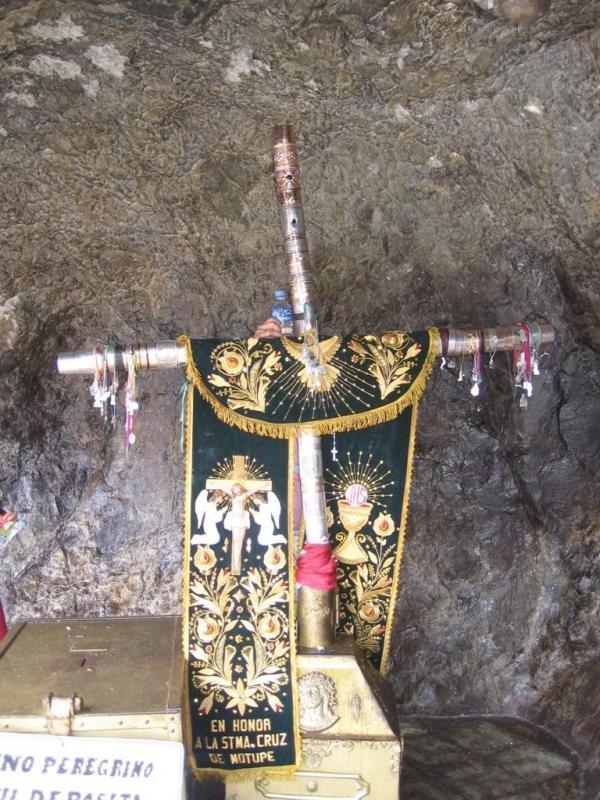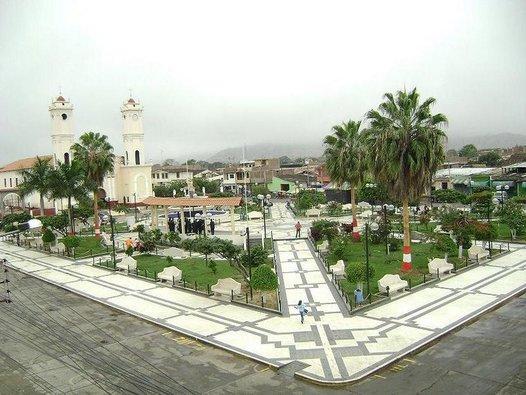Lambayeque, Lambayeque, Peru
Suggest Place to Visit
342
Track to location with GPS |
 |
This district was created in the time of Independence. Its capital is the city of Olmos, located in the valley of the same name, 108 km. North of the city of Chiclayo and 174 m.s.n.m .; the old Pan-American highway passes 500 m. East of Olmos.
The city of Olmos has a very ancient history. On June 27, 1573, Bernardino Loayza, the Spanish Visitor of the districts of San Miguel de Piura, Guayaquil and Puerto Viejo, issued an ordinance in which he arranged to reduce the different indigenous settlements in the Santovelico area. This is the birth certificate of the Santo Domingo de Olmos people.
It was given the name of Olmos because the Spaniards struck the white wood that was abundant in the place with European elms.
But before this Spanish foundation, some Sechurano muleteers established a population seat in the place called Los Yurnes, from where when water was scarce, they moved to the Ficuar sector, where the Santovelico aboriginal town existed, where the Spanish foundation was produced. From here, according to Olazabal, as water became scarce again, they made the following transfers: at the end of the 16th century, to San Cristóbal; the year 1687, to Cascajal, the year 1705, to Copiz, Filaque sector; finally, the same year, to the current location of the city of Olmos.
Location and limits.- The district of Olmos is located in the extreme Northwest of the department and the province of Lambayeque, within the Chala natural region, although some small eastern sectors are in the maritime Yunga. Its limits are: To the North and West, with the department of Piura; to the East, with the districts of Salas, Motupe, Jayanca and Pacora; to the South, with the district of Mórrope.
The residents of Olmos opted for tourism as an economic alternative to the peasant and agro-industrial crisis that affects them. Located at the crossroads of the roads that connect Piura and Chiclayo with Jaén and Chacahpoyas; Olmos shows for the first time its imposing petroglyphs of the Boliches creek, three thousand years old, as well as its good hotel infrastructure, its beautiful countryside and its immense carob forests that hides a reckless circuit for high adventure sports. Some say that it is AMARU, the old serpent of wisdom, the Andean cultural maker forger of civilizations. Others claim that it is a symbolic representation of the Milky Way, and argue that in this corner of the Boliches creek, on the outskirts of Olmos, there is a spectacular view of the night sky where the Milky Way stands out as the immense backbone of the universe . There are those who remember that this two-headed snake leads us to explain the Andean duality, that it is one of the favorite icons of the Chavín culture and that Moches, Nazcas and Paracas also had it among their divinities. The truth is that we did not get out of our astonishment when we saw the magnitude and beauty of the petroglyphs scattered in a short space of the Boliches stream, just 4 kilometers from the junction of the road to Jaén, in the heart of Olmos, the northernmost province from the department of Lambayeque. The area is a natural confluence that united the areas of influence of the Vicús, Moches, Chimús and Chachapoyas cultures, so much so that it was precisely in Olmos where Francisco Pizarro and his hosts rested before continuing their journey to Cajamarca, coming from Tumbes and from San Miguel de Piura. Very close to Amaru we find the image of a man looking at the sky engraved on a rock that rests on the old trunk of a carob tree. It must be almost a meter high and is surrounded by engravings eroded by wind, rain and time. His eyes point to the north, his elbows are raised and he wears ceremonial ornaments on his shoulders. On its thorax it looks something like a spinal column with serpentine lines. A dozen wedges adorn his skin at stomach level. In the area they preferred to call him ´´the Inca´´. Beyond that, the surprise increases when we contemplate a huge figure with a very clear Chavín influence engraved on a large rock. It looks like a labyrinth of rooms and passageways, but as we move away we can see the design of a bird of prey (condor?) Placed in profile following the typical design of the Chavín artists. ´´The interpretations abound - says the architect Luis Marquina, owner of the ecological shelter El Remanso, in Olmos - but the truth is that although they were studied since the 60s, these petroglyphs have been abandoned by the cultural authorities of our country , their designs are being erased by erosion and there is no shortage of unscrupulous visitors who are pulling out rock slabs engraved with petroglyphs. Marquina takes us to a rock known as ´´la Silla del Inca´´
Comments
We don´t have yet any comments about:
Elm City
Elm City
Be the first to leave a comment as it is very important to inform other people
Outros locais a visitar
Within a radius of 20 km from:Elm City
City of Motupe |
| 19,2 Km |
 |
Hotel reservation near Elm City within a radius of 20 km
No results
Why to book with CLUBE TRAVEL
The best prices
Our partnerships with the world´s largest operators offer research on the best market prices.
More options
At Rotas Turisticos you can book the hotel, buy the air ticket, book the transfer from the airport to the hotel and vice versa, book the local excursions, rent the car, take travel insurance and consult the places to visit and where to go.
Holiday Tips & Destinations
Hundreds of holiday destinations with all the options that allow you to easily choose the destination that best suits your dream vacation.
CLUBE TRAVEL
Links





